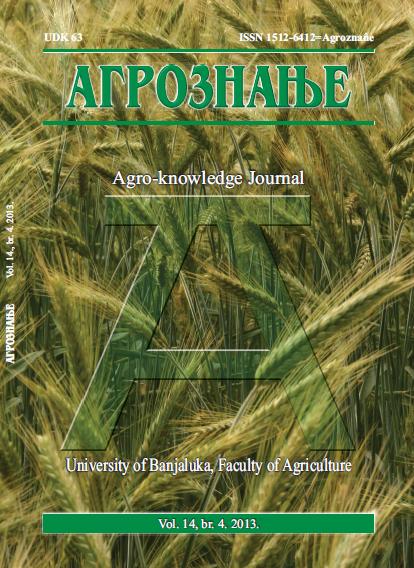Efficacy of Chemical Weed Control in Potato (Solanum tuberosum L.)
DOI:
https://doi.org/10.7251/AGREN1304487JAbstract
In this paper the results of efficiency of combined application of six herbicides in weed control in potato were presented. The study was done during 2007 and 2008 in Kolašin, on acid brown soil, at an altitude of about 900 m. In the experiment the following herbicides were examined: S-metalachlor, Bentazone, Acetohlor, Flurochloridone, Metribuzin and Dimetenamid-P. The study was conducted in the Kennebec variety crop. All applied herbicides had satisfactory effect in decreasing number and biomass of weeds. As the most effective variants in two-year average, Sencor 70 WP and Genius were expressed (95 and 94% for the number and 92 and 88.8% for weed biomass) and the weakest effect had combination of Dual Gold 960 EC + Basagran (82.3; 69.4, respectively). In all investigated combinations of herbicides significantly higher tuber yield was achieved comparing to the control. The highest yield of tubers was measured in variant where Acenit 800 EC was applied - 33 t ha-1, while the lowest yield had the control variant - 18.4 t ha-1.Downloads
Published
2013-12-27
Issue
Section
Articles

